How many of us have attended the traditional one-shot workshop and secretly yearned for a substantive, more sustained, and extensive opportunity to practice what was learned? With an emphasis on accountability, there is little time or money to waste on ineffective professional development. Although trained educators have mastered a set of knowledge, skills, and dispositions, continued professional development provides an opportunity to extend and refine them. This goal is evident in both The Texas State Plan for the Education of Gifted/Talented Students (Texas Education Agency, 2009) and the Texas Administrative Code. Both documents require that teachers who provide instruction and services that are a part of the program for gifted students receive a minimum of 6 hours annually of professional development in gifted education and that administrators and counselors who have authority for program decisions have a minimum of 6 hours of professional development that includes nature and needs of gifted and talented students and program options.
Reflecting on Effective Professional Development Strategies
The 2009 status report on teacher development from the National Staff Development Council (Darling-Hammond, Wei, Andree, Richardson, & Orphanos, 2009) noted that the literature points to some basic principles for effective professional development. These principles include:
- be intensive, ongoing, and connected to practice;
- focus on student learning and address the teaching of specific curriculum content;
- align with school improvement priorities and goals; and
- build strong working relationships among teachers.
Desimone (2009) identified and defined five core features that are widely endorsed by the field as being critical components for effective teacher professional development, including content focus, active learning, coherence, duration, and collective participation. Content focus includes the knowledge and skills necessary for teachers to carry out their day-to-day work in the classroom with respect to the topic of the professional learning. Active learning involves opportunities to be actively engaged in meaningful discussion, planning, and practice during the professional development activity and the reality of their day-to-day work. Coherence is the connection between the professional development activity and the reality of the classroom. Duration indicates the need for the professional development to be of sufficient duration to enable engagement, leading to possible intellectual and pedagogical change. Collective participation refers to professional learning communities that encourage interaction and discourse.
Darling-Hammond and Richardson (2009) shared that
Current research suggests that providing intensive, content-rich, and collegial learning opportunities for teachers can improve both teaching and student learning. When schools support teachers with well-designed and rich professional development, those teachers are able to create the same types of rigorous and engaging opportunities for students—a foundation for student success in school and beyond.
(p. 52)
Keeping these suggestions in mind can help guide the decision-making processes related to identifying and implementing effective professional development for session participants.
Selecting Effective Professional Development
Professional development related to gifted and talented education should follow best practices to ensure sessions meet campus and district needs. Some considerations include:
- learning initiatives with teachers’ work assignments and with content standards;
- acknowledgment of beliefs and practices and connections with teachers’ daily work;
- learning that results in products useful for classroom implementation;
- reflection on and engagement in discussion around the connections to teachers’ environments, concerns, and questions;
- context provided across a wide range of topics, issues, and/or learning goals;
- technology integration goals supported in conjunction with session content;
- active, ongoing engagement with content;
- opportunities for collaboration;
- opportunities for follow-up;
- support of administration;
- open-ended learning;
- opportunities for intrinsic motivation; and
- accommodation of learning styles and preferences.
Guiding Session Facilitation
Insight into practices that enhance the professional development sessions may be divided into three areas: preassessment of participants, support for participants, and postassessment through administrative and peer support. These three components are as vital to educators as they are to gifted students in the classroom. Postassessment may be coupled with preassessment. The district coordinator or local facilitator will want to consider the following suggestions in developing effective professional development sessions or book studies that are face-to-face, blended, or online only.
Preassessment
Providers will want to offer reading, activities, and/or questions to think about prior to the training along with context across a wide range of topics, issues, and/or learning goals. These efforts are designed to emphasize subject-area content and pedagogy as well as student learning outcomes and to set up opportunities for intrinsic motivation.
Support
The following are presented to ensure that teachers are supported throughout the professional development process:
- provide strong coherence of professional learning initiatives with teachers’ work assignments and with content standards;
- acknowledge beliefs and practices and connect with teachers’ daily work;
- support technology integration goals in conjunction with course content;
- accommodate learning styles and preferences; and
- garner support from central administration.
Postassessment
Postassessment includes both administrative support and time for peer input and encouragement. For example, administrators will reflect on and engage in discussion around connections to teachers’ environments, concerns, and questions that will lead to active students who display ongoing engagement with content and learning results in classroom products. Peer support will come in the form of peer feedback and discussion that lead to opportunities for collaboration and follow up with face-to-face activities.
Implementing Case Studies as Effective Professional Development
Although field experiences and hands-on practice may best facilitate professional development, time and circumstances may not always support these endeavors. Case studies can fill this void by offering problem-based learning scenarios that support effective teacher professional development as described by Desimone (2009). Case studies provide opportunities for active, hands-on learning and situate learning in an authentic context. They enable teachers to acquire new knowledge, apply it to practice, and reflect on the results with colleagues.
Positive features of implementing case studies for professional development include the idea that they can be read quickly and discussed as deeply as required by the audience. They offer the opportunity for participants to step outside the problem situation to analyze the case from multiple perspectives and encourage both convergent and divergent responses.
A format to guide the reader of case studies through active reflection and extended learning is helpful. Discussion questions, activities, and extensions found in the sample case study below encourage an active response rather than a passive reaction, resulting in the reader being engaged in the process. Within each case, the Things to Consider section supplies the reader with essential information without imparting an explicit action, recommendation, or solution. Discussion Questions specifically encourage exploration of the issue or issues presented in the learning scenario. They encourage the reflection of personal and professional philosophies and may stimulate further investigations provided in the activities that follow. Activities prompt further exploration of the issues involved in the case, while Extensions provide an opportunity for the reader to apply understanding and insights related to the issue presented in another context, field, or situation. These extensions often provide an opportunity to generalize beyond the particular case.
Participating in one or more of the activities and/or extensions ensures that insight into the topic is obtained. Suggestions for Additional Readings offer the facilitator and/or reader supplementary resources to broaden the concept for enhanced understanding (Weber, Behrens, & Boswell, 2016; Weber, Boswell, & Behrens, 2014). Learning scenarios in case studies can encourage analysis and critical reflection of current issues facing a campus or district. They can also offer insight about and discussion of prevalent issues in the field of gifted education such as identifying and serving twice-exceptional students, dealing with underachievement, enhancing creativity, implementing differentiation strategies, working with children from poverty, meeting the needs of young gifted children, creating supportive learning environments, and investigating different types of services and programs.
Visiting a Sample Case Study
Consider how the following case study, “University School District” (Weber et al., 2016), could be utilized to encourage a discussion on the administrative and teaching professionals’ involvement in professional development to create classrooms for gifted and advanced learners.
University School District
University School District is a midsized district of 20,000 students. There are 20 elementary campuses equally distributed across the north, south, east, and west sectors of Rayder City. The elementary campuses include 500–650 students from prekindergarten through fifth grade.
Although a part of the decision to move from pull-out to in-class cluster classrooms services is monetary, the ultimate goal is that gifted and advanced students learn in environments that meet their needs on a daily basis rather than once each week. One issue stemming from this change relates to the number of teachers and their administrators who must participate in professional development within the monetary and time constraints of the district. District administrators recognize that other issues may surface throughout the first year of implementation, but their efforts will center on professional development.
From Exploring Critical Issues in Gifted Education: A Case Studies Approach (pp. 127–131) by C. L. Weber, C. Boswell, & W. A. Behrens, 2014, Waco, TX: Prufrock Press. Copyright 2014 by Prufrock Press. Reproduced with permission.
Things to Consider
- Administrators need to support teachers in cluster classrooms.
- Teacher selection should be based on individuals’ knowledge of the needs of gifted and advanced learners and the curriculum appropriate for this population.
- Campus and individual Professional Development Plans (PDP) are developed based on formal and informal observations of teachers and students.
- Professional development should be delivered in a variety of formats.
The Campuses
The campuses in USD can be divided into categories that range from meeting needs of all learners to meeting needs of only struggling learners. Three campus types fall into these categories:
- Type 1 campuses understand and meet the needs of gifted and advanced learners through highly qualified teachers and with curriculum appropriate for gifted learners. They include many teachers with master’s degrees in gifted education who are able to meet the needs of all learners on their campus. These teachers regularly participate in professional development. Their campuses focus on project- and problem-based learning, infusing critical and creative thinking into all lessons. Their teachers and administrators consistently search for new ways to meet the needs of all learners on their campuses. Classrooms are designed with learning centers and other physical arrangements that allow for differentiation.
- Type 2 campuses have knowledge of this population’s needs, but historically have left all curriculum efforts to the pull-out teachers. Fewer teachers have sought advanced degrees in gifted education. Very often, their campus professional development revolves around the needs of struggling learners who need help with basic skills. Their focus is on Responses to Intervention (RtI) for the needs of students with learning disabilities or dyslexia and students who have difficulty with basic math and reading skills. They often use gifted students to tutor learners who need help in math and reading.
- Type 3 campuses only meet the needs of those learners who struggle to grasp basic content; therefore, gifted learners are left to learn on their own or to act as tutors for other students. Type 3 campus teachers feel they must only meet the needs of those learners who struggle to grasp basic content and are similar to the Type 2 campuses in their approach to services for gifted and talented students. The teachers and administrators are angry that there is no longer one teacher on each campus to serve this population. For example, all identification procedures, extracurricular and co-curricular competitions, and field experiences were previously the responsibility of the pull-out teacher. With that teacher now in a regular or cluster classroom, the administrator might struggle to find another person to take over the tasks or require that each cluster teacher take his or her share of the responsibility.
The Challenge
The Director of Advanced Academic Services must make a plan to encompass all professional development needs so that gifted and talented students have opportunities to work at their required level of learning, at an appropriate pace of curriculum, and interact with other gifted students (Latz, Speirs Neumeister, Adams, & Pierce; 2009; McDiarmid & Clevenger-Bright, 2008; VanTassel-Baska, 2006).
Many campus leaders, teachers, and parents are unhappy with the change in delivery of services. Most were content to see the children work on projects of varying quality in a segregated environment. Parents’ uneasiness ranges from the fear that their child will not receive the level of instruction they feel is necessary to the fear that their children will have to become teacher aides in the mixed-ability classroom.
Campus leaders recognize their job will encompass the “how-to” for the first year: how to meet students’ needs, how to develop curriculum, and how to manage classrooms teachers’ concerns related to differentiated curriculum. They realize they have not developed curriculum specifically for the pace and depth required for gifted and talented learners. USD administrators, the Superintendent, the Assistant Superintendent for Curriculum and Instruction, and the Director of Advanced Academic Services have tried to allay all fears by stating that their gifted and talented children will receive quality services all day, every day instead of once a week. This core of administrators also realizes that a considerable amount of professional development must be offered in order to meet the expectations of the parents and community. The professional development must include curriculum development, an understanding of the nature and needs of gifted students, and classroom management to facilitate differentiation (Hertberg-Davis & Brighton 2006; Johnsen, Haensly, Ryser, & Ford, 2002; National Association for Gifted Children [NAGC], 2010; VanTassel-Baska & Stambaugh, 2005).
School district personnel look to the NAGC Pre-K–Grade 12 Gifted Education Programming Standards (NAGC, 2010) for guidance in meeting the needs of students in USD elementary schools. Within Standard 1: Learning and Development, they explore Student Outcomes and Evidence-Based Practices in order to establish the best possible learning environment for the students.
Discussion Questions
- Are all campuses easily divided into the three categories? How could your district divide its campuses?
- What needs beyond professional development could be considered?
- Is professional development the only way to help teachers customize instruction for gifted learners? Why or why not?
- In what other ways could the needs of the teachers’ be described? How can their needs be met?
- If your state uses a prescribed teacher evaluation tool, in what ways could this case study incorporate it?
- In what ways does your state or district use an evaluation tool for professional development?
Activities
- Use Evidence-Based Practice 1.3.1 (NAGC, 2010) to develop a 3-hour professional development session for one of the campuses described in this case. Present this to your faculty if appropriate.
- Describe at least two other means of facilitating the delivery of services for gifted children in one of the campuses mentioned above. Create a role-play for a faculty meeting.
- Select a Type 2 or 3 classroom described in this case. Detail and illustrate how you believe a classroom would look physically. Make changes to the classroom to meet Standard 1: Learning and Development Evidence-Based Practices 1.1.1 and 1.1.2 (NAGC, 2010).
- Research the best practices among those Standard 1: Learning and Development Evidence-Based Practices 1.3.1 (NAGC, 2010). Develop one activity to facilitate a practice within a classroom in a Type 3 campus.
Extensions
- Create a chart that compares and contrasts the positive and negative aspects of pull-out services for gifted learners versus cluster classrooms.
- Develop an online 3-hour professional development session on the topic of classroom management for gifted and talented students in the regular classroom. Offer the session to your district or a regional education group.
- Create a board of education presentation that describes the purpose of cluster classrooms for gifted learners or the advantages of pull-out services for gifted students.
Additional Readings
- Brighton, C. M., & Moon, T. R. (2007, November). Two decades of research on differentiation: What do we now know? Paper presented at the National Association for Gifted Children annual conference, Minneapolis, MN. Retrieved from http://nrcgtuva.org/presentations/TwoDecadesofResearch_CMBTRM2007.pdf
- Colangelo, N., Assouline, S. G., & Gross, M. U. M. (2004). A nation deceived: How schools hold back America’s brightest students (Vol. 1) Iowa City: The University of Iowa, The Connie Belin & Jacqueline N. Blank International Center for Gifted Education and Talent Development. Retrieved from http://www.education.uiowa.edu/belinblank/pdfs/ND_v1.pdf
- Council of Chief State School Officers. (2011). Interstate Teacher Assessment and Support Consortium (InTASC) model core teaching standards: A resource for state dialogue. Washington, DC: Author.
- Edgecombe, N. (2011). Accelerating the academic achievement of students referred to developmental education [CCRC Working Paper No. 30]. New York, NY: Community College Research Center, Teachers College, Columbia University. Retrieved from http://ccrc.tc.columbia.edu/Publication.asp?UID=867
- Knopper, D., & Fertig, C. (2005). Differentiation for gifted children: It’s all about trust. The Illinois Association for Gifted Children Journal, 6(1), 6–8.
- National Governors Association. (2009). Increasing college success: A road map for governors [Issue Brief]. Washington, DC: NGA Center for Best Practices.
- Paul, R., & Elder, L. (2009). The miniature guide to critical thinking: Concepts and tools. Tomales, CA: Foundation for Critical Thinking Press.
Utilizing Case Studies for Professional Development: Final Thoughts
It is important to consider the following in the decision to implement case studies for professional development.
The NAGC-CEC Teacher Preparation Standards in Gifted and Talented Education (2013), the NAGC-CEC Advanced Standards in Gifted Education Teacher Preparation (2013), and the NAGC Pre-K–Grade 12 Gifted Programming Standards (2010) emphasize a strong knowledge base including a focus on the literature and theory in the field, reviews of the literature, and position papers. The research used is based on peer-reviewed studies using appropriate methodologies that emphasize a cause/effect focus and support replication of results. Promising practices and professional wisdom are also components supported in these standards. Providing case studies for professional development that are aligned with these standards provide educators an opportunity to expanding their content and instructional repertoires with the intent on improving student growth.
(Weber et al., 2016, p. 16)
Since the publication of our first book, Exploring Critical Issues in Gifted Education: A Case Studies Approach (Weber et al., 2014), the feedback we have received from K–12 educators and university faculty using case studies in teacher preparation programs confirms the importance of situating learning within authentic and meaningful contexts. Problem-based scenarios that promote the NAGC and CEC standards prepare the reader to anticipate the learning needs of their students and modify the curriculum to support those needs. When student needs are supported they are more likely to achieve at higher levels and meet their potential.
References
Darling-Hammond, L., & Richardson, N. (2009). Teacher learning: What Matters? Educational Leadership, 66(5), 46–63.
Darling-Hammond, L., Wei, R. C., Andree, A., Richardson, N., & Orphanos, S. (2009). Professional learning in the learning profession: A status report on teacher development in the United States and abroad. Dallas, TX: National Staff Development Council.
Desimone, L. (2009). Improving impact studies of teachers’ professional development: Towards better conceptualizations and measures. Educational Researcher, 38, 181–199. doi:10.3102/0013189X08331140
Hertberg-Davis, H. L., & Brighton, C. M. (2006). Support and sabotage: Principals’ influence on middle school teachers’ responses to differentiation. Journal of Secondary Gifted Education, 17, 90–102. doi:10.4219/jsge-2006-685
Johnsen, S. K., Haensly, P. A., Ryser, G. R., & Ford, R. F. (2002). Changing general education classroom practices to adapt for gifted students. Gifted Child Quarterly, 46, 45–63. doi:10.1177/001698620204600105
Latz, A. O., Speirs Neumeister, K. L., Adams, C. M., & Pierce, R. L. (2009). Peer coaching to improve classroom differentiation: Perspectives from Project CLUE. Roeper Review, 31, 27–39. doi:10.1080/02783190802527356
McDiarmid, G. W., & Clevenger-Bright, M. (2008). Rethinking teacher capacity. In M. Cochran-Smith, S. Feiman-Nemser, D. J. McIntyre, & K. E. Demers (Eds.), Handbook of research on teacher education: Enduring questions in changing contexts (3rd ed., pp. 134–156). New York, NY: Routledge.
National Association for Gifted Children. (2010). Pre-K–grade 12 gifted education programming standards. Retrieved from http://www.nagc.org/index.aspx?id=546
National Association for Gifted Children, & Council for Exceptional Children. (2013). Advanced standards in gifted education teacher preparation. Washington, DC: Author.
National Association for Gifted Children, & Council for Exceptional Children. (2013). NAGC–CEC teacher preparation standards in gifted and talented education. Washington, DC: Author.
VanTassel-Baska, J. (2006). A content analysis of evaluation findings across 20 gifted programs: A clarion call for enhanced gifted program development. Gifted Child Quarterly, 50, 199–215. doi:10.1177/001698620605000302
VanTassel-Baska, J., & Stambaugh, T. (2005). Challenges and possibilities for serving gifted learners in the regular classroom. Theory Into Practice, 44, 211–217. doi:10.1207/s15430421tip4403_5
Weber, C. L., Behrens, W. A., & Boswell, C. (2016). Differentiating instruction for gifted learners: A case studies approach. Waco, TX: Prufrock Press.
Weber, C. L., Boswell, C., & Behrens, W. A. (2014). Exploring critical issues in gifted education: A case studies approach. Waco, TX: Prufrock Press.
Christine L. Weber, Ph.D., is an associate professor of Childhood Education, Literacy, and TESOL at the University of North Florida, in Jacksonville with a Ph.D. in curriculum and instruction from Texas A&M University. She instructs teachers in strategies for conceptual teaching and learning, assessment tools, and meeting the needs of gifted learners. Dr. Weber has been a member of the Editorial Review Board for Gifted Child Today since 1998. Under her leadership, the Florida’s Frameworks for K–12 Gifted Learners was developed in 2007 and disseminated to all school districts in the state. She has published numerous articles and presented at state, national, and international conferences related to the education of gifted children. She currently serves on the Representative Assembly for CEC-TAG, as awards co-chair for the NAGC Research & Evaluation Network, and as chair-elect and secretary for the NAGC Professional Development Network. Her recent books with coauthors Cecelia Boswell and Wendy Behrens include Differentiating Instruction for Gifted Learners: A Case Studies Approach (2016) and Exploring Critical Issues in Gifted Education: A Case Studies Approach (2014), which received a 2014 Legacy Book Award nomination from the Texas Association for the Gifted and Talented. She also coauthored a book chapter “Gifted Students and Advanced Readers” in Ebooks for Elementary School (2015). She may be reached at cweber@unf.edu.
Cecelia Boswell, Ed.D., is an educator with more than 40 years of experience in education. She was a teacher of migrant students and the gifted, and served as the Advanced Academics consultant for the Education Service Center (ESC) in Abilene, TX, and the Executive Director of Advanced Academics for Waco ISD. She is an independent consultant working nationally and throughout Texas. Dr. Boswell has served on the Texas Association for the Gifted and Talented Board of Directors and as president of the organization and was president of CEC-TAG. She has coauthored four books: RtI for the Gifted Student, Effective Program Practices for Underserved Gifted Students, Exploring Critical Issues in Gifted Education: A Case Studies Approach, and Differentiating Instruction for Gifted Learners: A Case Studies Approach. Dr. Boswell is currently working with districts throughout Texas auditing GT and IB services and coauthoring a book about developing leadership in gifted students.
Wendy Behrens, is the Gifted Education Specialist for the Minnesota Department of Education (MDE), where she leads and advises educators, administrators, and parents. She provides technical assistance to and collaborates with institutions of higher education, educator networks, and others interested in promoting rigorous educational opportunities. Behrens also serves as Project Director for Project North Star, a 2015 Javits Grant awarded to the department.
Prior to her service to the state, Behrens worked as a district gifted services coordinator and a consultant for the Science Museum of Minnesota. She presents frequently on the nature and needs of gifted learners, instructional strategies, comprehensive service design, and policies that support highly able learners. Behrens is president of the Council of State Directors of Programs for the Gifted, and received the President’s award from the National Association for Gifted Children in 2013. She is an elected U.S. delegate to the World Council for Gifted and Talented Children, a member of the CEC-TAG board, and on advisory councils for the Center for Talent Development and Grayson School.
Behrens coauthored Prufrock Press and NAGC copublications Exploring Critical Issues in Gifted Education: A Case Studies Approach (2013) and Differentiated Instruction for Gifted Learners: A Case Studies Approach (2016) with Christine L. Weber and Cecelia Boswell.







